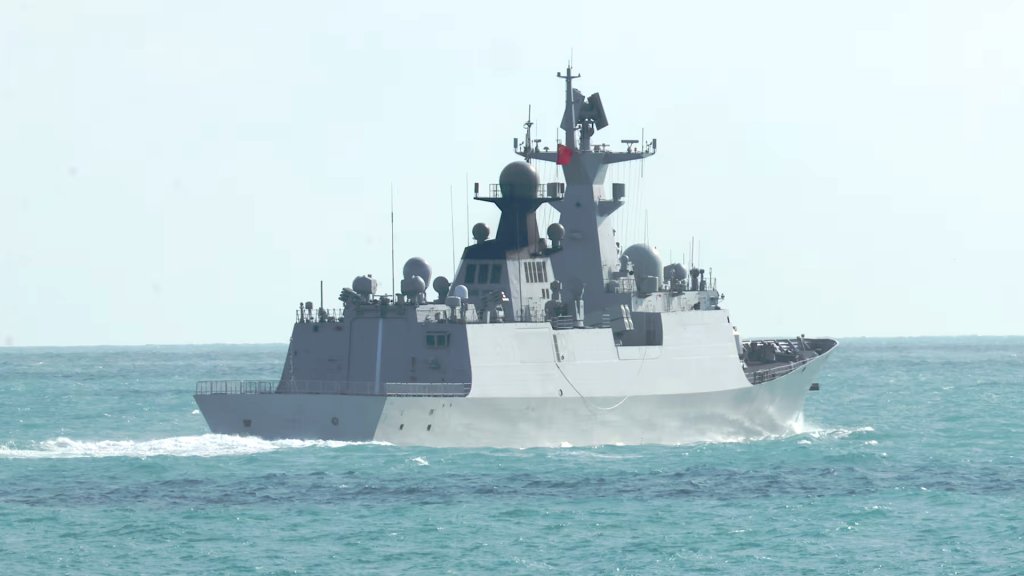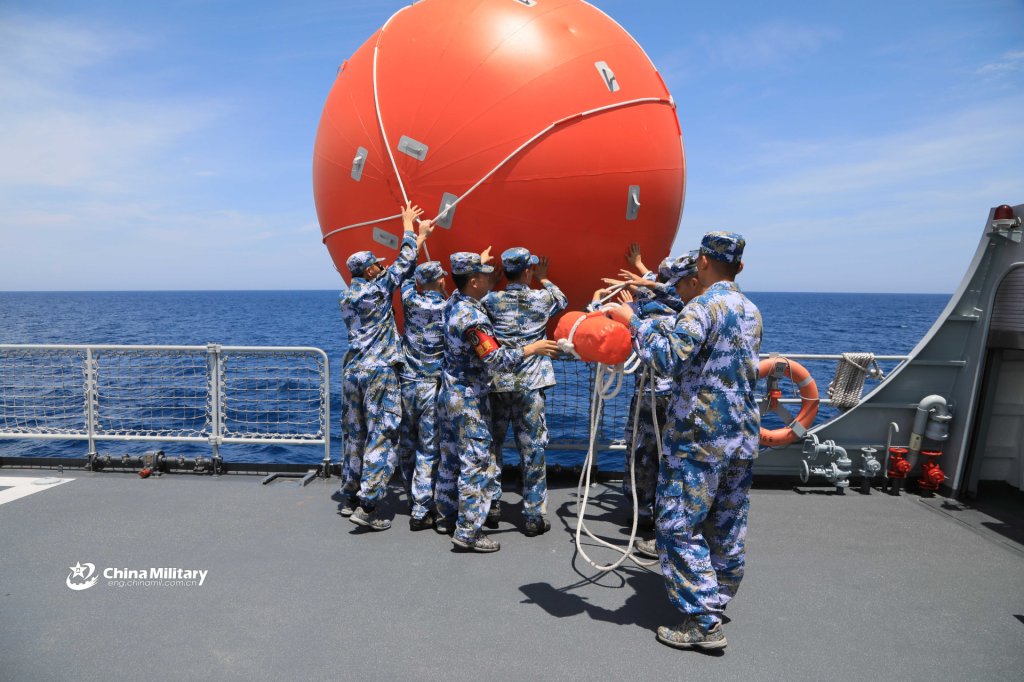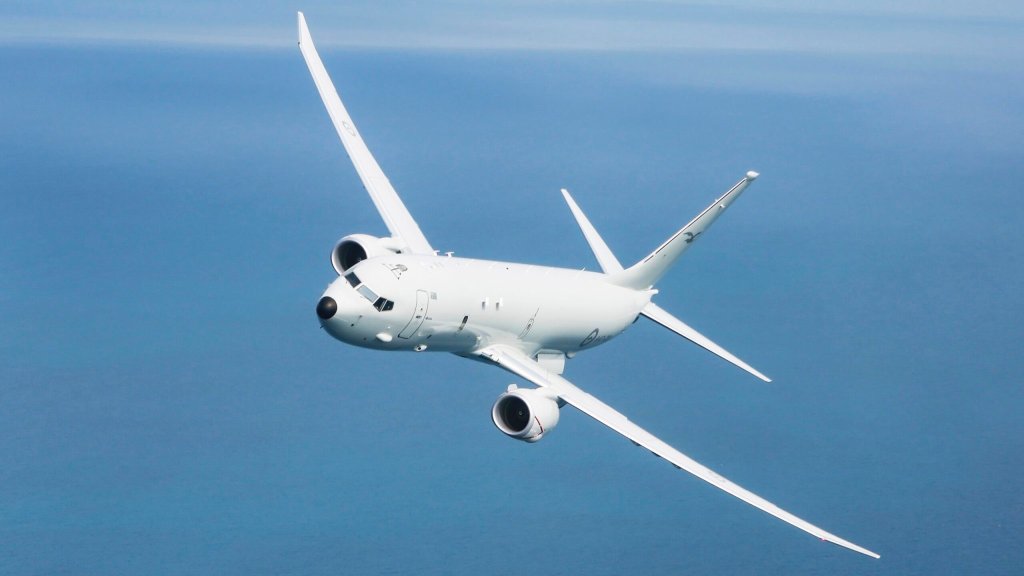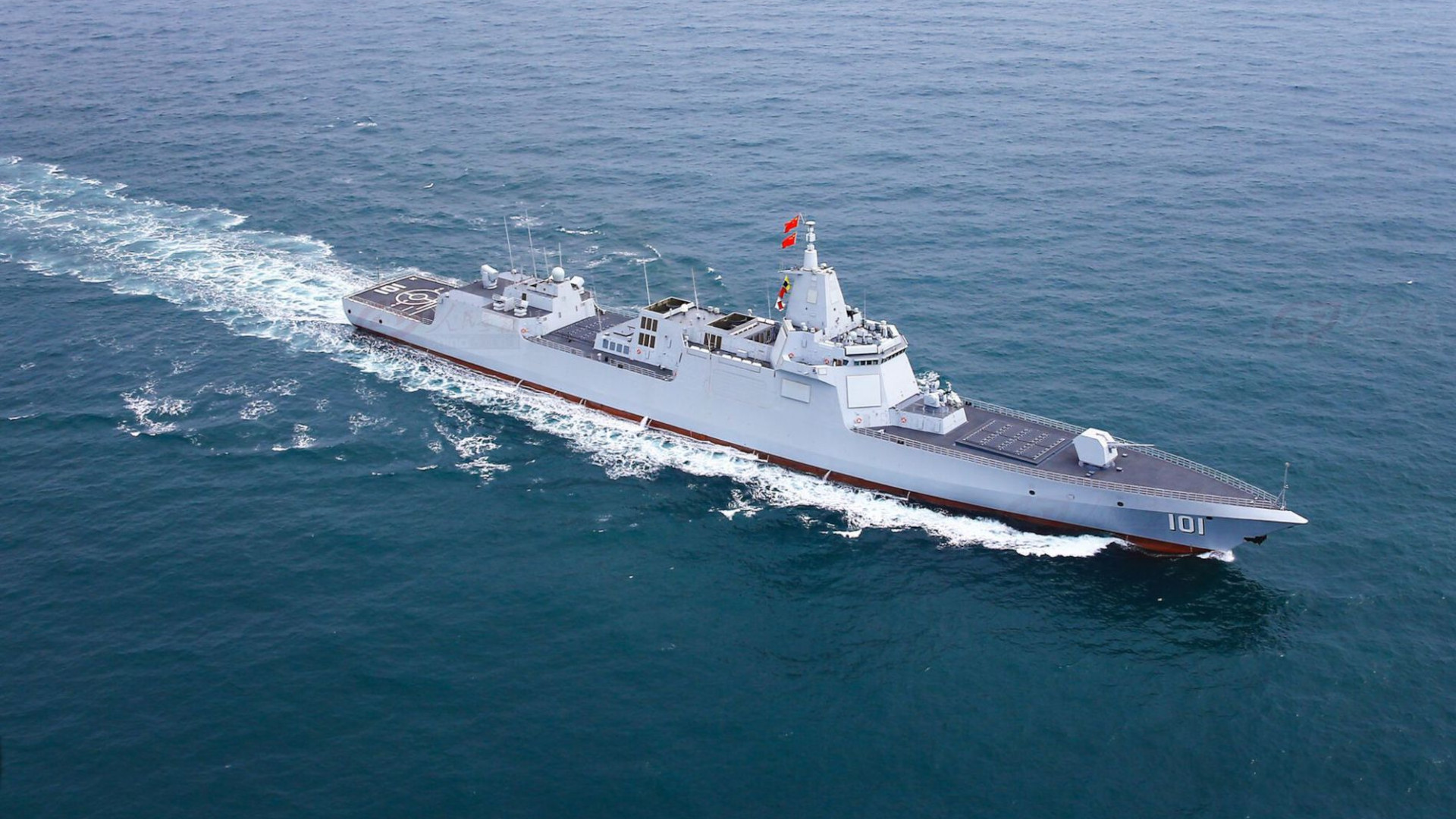A rare Chinese naval drill with a previously unannounced live-fire component has disrupted air traffic over and around the Tasman Sea between Australia and New Zealand. Authorities in Australia say they only learned that the Chinese ships would be firing some of their weapons after the crews of commercial airliners flying overhead received alerts. In addition to the signals this particular incident sends, the general presence of the flotilla in the region underscores the increasing reach of a steadily larger and more capable People’s Liberation Army Navy (PLAN) beyond China’s own shores.
The PLAN’s Type 055 destroyer Zunyi, Type 054A frigate Hengyang, and Type 903 replenishment ship Weishanhu have been sailing south in international waters to the east of Australia since at least last week. Often referred to as a cruiser given its size, the Type 055 is one of the most modern and capable warships in Chinese service today. Elements of the Australian and New Zealand armed forces, including warships and P-8A Poseidon maritime patrol planes, have been shadowing their movements.

“We weren’t notified by China, we became aware of the issue during the course of the day,” Australian Defense Minister Richard Marles said while speaking to ABC Radio Perth earlier today. “What China did was put out a notification that it was intending to engage in live fire, and by that I mean a broadcast that was picked up by airlines, literally commercial planes that were flying across the Tasman.”
“I can understand why this was probably … very disconcerting for the airlines,” Marles added, stressing that Australia typically gives 12 to 24 hours notice ahead of live-fire exercises.
Based on information in alerts shared via the international Aircraft Communications Addressing and Reporting System (ACARS), the Chinese drills occurred in an area roughly 400 miles (340 nautical miles) to the southeast of the Australian city of Sydney. An Emirates flight heading from Sydney in Australia to New Zealand’s Christchurch was reportedly directly hailed by the Chinese flotilla warning the aircraft to stay at least 19 nautical miles away from where they were operating. Qantas and Air New Zealand have now made changes to the routes their planes take over and around the Tasman Sea, and other airlines have reportedly done the same. Civilian aviation authorities in Australia have now issued formal “advice” regarding air traffic around where the Chinese ships are operating.
What types of weapons the Chinese ships actually fired is unclear.
“The ABC understands the Chinese vessels were seen deploying a floating target, changing formation and then resetting formation consistent with a live fire event,” according to that outlet. “However, it is understood the Australian military did not observe the vessels firing on the target.”
Inflatable floating targets, typically red or bright orange in color, and often referred to as “killer tomatoes” as a result, are routinely used in maritime training exercises, especially live-fire gunnery drills, by armed forces around the world.


Whether the Chinese ships will conduct additional live-fire drills while they are in the Tasman Sea or elsewhere in the region is unknown.
“This is activity that has occurred in waters consistent with international law,” Australia’s Prime Minister Anthony Albanese has said. “There has been no imminent risk of danger to any Australian assets or New Zealand assets.”
“The [People’s Liberation Army] Southern Theatre Command organized the Chinese fleet to conduct a far seas exercise,” Guo Jiakun, a spokesperson for China’s Foreign Ministry, said, according to ABC. “The drill was carried out in a safe, standard, and professional manner in accordance with the relevant international law and international practice.”
At the same time, the Chinese flotilla’s actions today, as well as its general presence in the region, are clearly at best atypical. Albanese has already drawn criticism within Australia for his muted response.

“There is no doubt that this is, not unprecedented, but an unusual event,” Marles had also told Sky News television yesterday just about the arrival of the Chinese ships in waters to the east of Australia.
“We have not been informed by the Chinese government why this task group has been deployed into our region, and we have not been informed what its future plans are,” New Zealand Defense Minister Judith Collins had said in a separate statement yesterday.
Especially now with the disruptive live-firing that was not announced in advance, it is hard not to see the Chinese flotilla’s operations as being intended to send a message at least to Australia, if not well beyond. Just five days ago, Australian and Chinese military officials held a high-level strategic dialogue in Beijing, the 23rd such engagement the two countries have held, but the first since 2019.
“At today’s Dialogue, both countries exchanged views on bilateral, global, and regional security issues, as well as military transparency and communication,” Australia’s Department of Defense said in a statement after the Feb. 17 gathering. “Australia reiterated the importance of all countries in the region operating in a safe and professional manner at all times to avoid the risk of miscalculation or escalation.”
There has been a general trend of increasingly assertive Chinese naval activity around Australia in recent years. For instance, in 2022, Australian authorities accused a Chinese warship sailing in waters to the north of Australia of harassing one of its P-8A aircraft with a laser. Chinese intelligence-gathering ships have become an increasingly common sight in international waters off Australia coasts, as well.

There has been a similar trend in more aggressive Chinese military interactions with foreign warships and aircraft, especially in and around the hotly disputed South China Sea. Just earlier this month, a Chinese fighter jet dropped flares in front of another Royal Australian Air Force (RAAF) P-8A flying over the South China Sea in what officials in Australia described as an “unsafe and unprofessional interaction.” Chinese state media has since released footage of this incident, as seen below.
All of this also comes as Australia has been working to modernize and otherwise bolster its naval capabilities with a clear eye toward being better able to challenge China in the Pacific. The most prominent effort in this regard is the Royal Australian Navy’s planned acquisition of a nuclear-powered submarine force with the assistance of its American and British allies. This is part of the larger trilateral Australia-United Kingdom-United States (AUKUS) defense cooperation agreement. The U.S. military’s own forward-deployed air and naval presence in Australia is also set to grow significantly.
For its part, China’s military has steadily worked to expand its ability to project naval and air power further and further away from its shores in all directions in the Pacific, as well as elsewhere globally. This includes a significant uptick in Chinese activity in the waters and skies around the U.S. state of Alaska, which has also often been conducted in direct cooperation with Russian forces. Chinese H-6 missile carrier aircraft notably made their first-ever appearance off Alaska last year as part of a joint patrol with Russian Tu-95 Bear bombers.
How long the Chinese flotilla in the Tasman Sea will stay there and whether it will conduct more live-fire drills remains to be seen. The ships have already sent clear signals and their actions so far could be a sign of things to come well beyond this particular deployment.
Contact the author: joe@twz.com
